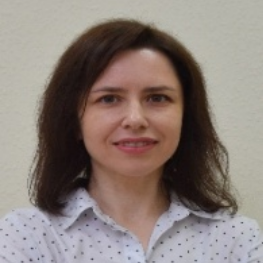
Kateryna Hazdiuk
Work place: Department of Computer Systems Software of the Yuriy Fedkovych Chernivtsi National University, Chernivtsi, 58002, Ukraine
E-mail: k.gazdiuk@chnu.edu.ua
Website: https://orcid.org/0000-0002-7568-4422
Research Interests: Graph and Image Processing, Artificial Intelligence, Simulation
Biography
Kateryna Hazdiuk is an associate professor at the Department of Computer Systems Software, Yuriy Fedkovych Chernivtsi National University, Chernivtsi, Ukraine. Since 2021, she has been a PhD in Software Engineering. Research interests: mathematical modeling and computer simulation of biosimilar processes and systems; artificial intelligence, deep learning, and neural networks for image classification; modeling the spread of infectious diseases using GeoSEIR(D) and cellular automata models.
Author Articles
Development and Testing of Voice User Interfaces Based on BERT Models for Speech Recognition in Distance Learning and Smart Home Systems
By Victoria Vysotska Zhengbing Hu Nikita Mykytyn Olena Nagachevska Kateryna Hazdiuk Dmytro Uhryn
DOI: https://doi.org/10.5815/ijcnis.2025.03.07, Pub. Date: 8 Jun. 2025
Voice User Interfaces (VUIs) focus on their application in IT and linguistics. Our research examines the capabilities and limitations of small and multilingual BERT models in the context of speech recognition and command conversion. We evaluate the performance of these models through a series of experiments, including the application of confusion matrices to assess their effectiveness. The findings reveal that larger models like multilingual BERT theoretically offer advanced capabilities but often demand more substantial resources and well-balanced datasets. Conversely, smaller models, though less resource-intensive, may sometimes provide more practical solutions. Our study underscores the importance of dataset quality, model fine-tuning, and efficient resource management in optimising VUIS. Insights gained from this research highlight the potential of neural networks to enhance and improve user interaction. Despite challenges in achieving a fully functional interface, the study provides valuable contributions to the VUIs development and sets the stage for future advancements in integrating AI with linguistic technologies. The article describes the development of a voice user interface (VUI) capable of recognising, analysing, and interpreting the Ukrainian language. For this purpose, several neural network architectures were used, including the Squeezeformer-CTC model, as well as a modified w2v-bert-2.0-uk model, which was used to decode speech commands into text. The multilingual BERT model (mBERT) for the classification of intentions was also tested. The developed system showed the prospects of using BERT models in combination with lightweight ASR architectures to create an effective voice interface in Ukrainian. Accuracy indicators (F1 = 91.5%, WER = 12.7%) indicate high-quality recognition, which is provided even in models with low memory capacity. The system is adaptable to conditions with limited resources, particularly for educational and living environments with a Ukrainian-speaking audience.
[...] Read more.Intelligent Application for Predicting Diabetes Spread Risk in the World Based on Machine Learning
By Dmytro Uhryn Victoria Vysotska Daryna Zadorozhna Mariia Spodaryk Kateryna Hazdiuk Zhengbing Hu
DOI: https://doi.org/10.5815/ijisa.2025.03.06, Pub. Date: 8 Jun. 2025
This paper presents the development and implementation of an intelligent system for predicting the risk of diabetes spread using machine learning techniques. The core of the system relies on the analysis of the Pima Indians Diabetes dataset through k-nearest neighbours (k-NN), Random Forest, Logistic Regression, Decision Trees and XGBoost algorithms. After pre-processing the data, including normalization and handling missing values, the k-NN model achieved an accuracy of 77.2%, precision of 80.0%, recall of 85.0%, F1-score of 83.0% and ROC of 81.9%. The Random Forest model achieved an accuracy of 81.0%, precision of 87.0%, recall of 91.0%, F1-score of 89.0% and ROC of 90.0%. The Logistic Regression model achieved an accuracy of 60.0%, precision of 93.0%, recall of 61.0%, F1-score of 74.0% and ROC of 69.0%. The Decision Trees model achieved an accuracy of 79.0%, precision of 87.0%, recall of 89.0%, F1-score of 88.0% and ROC of 83.0%. In comparison, the XGBoost model outperformed with an accuracy of 83.0%, precision of 85.0%, recall of 96.0%, F1-score of 90.0% and ROC of 91.0%, indicating strong prediction capabilities. The proposed system integrates both hardware (continuous glucose monitors) and software (AI-based classifiers) components, ensuring real-time blood glucose level tracking and early-stage diabetes risk prediction. The novelty lies in the proposed architecture of a distributed intelligent monitoring system and the use of ensemble learning for risk assessment. The results demonstrate the system's potential for proactive healthcare delivery and patient-centred diabetes management.
[...] Read more.Other Articles
Subscribe to receive issue release notifications and newsletters from MECS Press journals